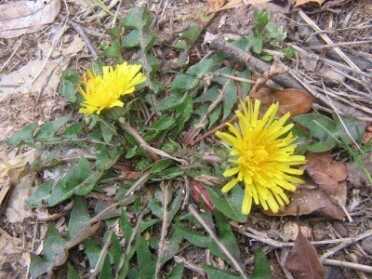
Where I grew up in New Hampshire dandelions were a constant lawn pest, but I haven’t seen one since moving to Florida. The USDA database has dandelion varieties all over the US, but the Florida website only has part of the state covered.
I don’t care how prepared you are. Whether you own a fully stocked bunker 500 feet below the surface that used to be a missile silo, or if you consider prepping to be a generator, 5 gallons of gas and some canned vegetables, there is always a chance that you will have to light out on foot with nothing but the clothes on your back. What then? You aren’t a cow and you can’t eat grass, but there are a lot of things in the woods and in the fields that you can eat for survival. The trick is knowing what is good and what is bad, and don’t that in advance.
When I first started working in the ranching regions of Florida, I was told that a common tree here is called the “cabbage palm.” Ok. The locals call palm trees “cabbages,” as in, “over by that cabbage.” Come to find out later that what they are referring to is the stuff you see in cans called “hearts of palm.” These are the palm trees from which they come, and they are all over south Florida. You can basically saw up a palm tree, cut into cookable pieces, and either boil or steam them to eat. They taste kinda like cabbage, and you won’t find a family cookout in these parts that doesn’t include a big pot of boiled cabbages. I have been reading edible plant books for years, but I had never heard of the “cabbage palm.”
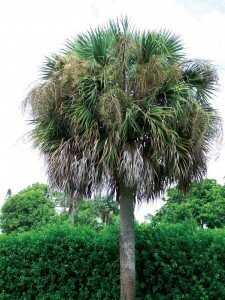
But the sabal palm, otherwise known as the “cabbage palm,” is all over the place. Who knew you could cut it down and eat the heart of it, in the supermarket called “hearts of palm.”
What I took from that is that the encyclopedic books of edible wild plants are for the most part useless. Likewise the modern survival magazines that you see on the supermarket magazine rack these days. Out of a dozen plants, or a hundred plants they might give you, with one picture each and no experience you’ll be hard pressed to find anything at all to eat that is local to you. Edible wild plants are all about local, and if you want to expect to survive, you really have to do your own research and go out into the woods, fields, or whatever and go find some food.
Internet Searches
The low budget and almost guaranteed way to do this is by using the power of the internet. Search Google for “[your state] edible wild plants.” Some of you are saying “well duh of course tell me something I didn’t know.” But have you ever done that before? Now that you see, for most of you anyway, that there are whole websites devoted to the subject for your state, or even your region, aren’t you glad I mentioned it?
The trick is to now take the time and go out and find them. You can’t go by the maps that they say the stuff grows. According to the FDA map, wood sorrel (Oxalis L.), is native to all of North America, but I can’t say I’ve ever seen it. The Florida Plant Atlas shows it growing all over the state in several varieties, and one variety is in almost every county. If I ever find it, I can eat it, yay, but unless I get out and start looking for it, talking to local ranchers, etc., wood sorrel is completely useless to me.
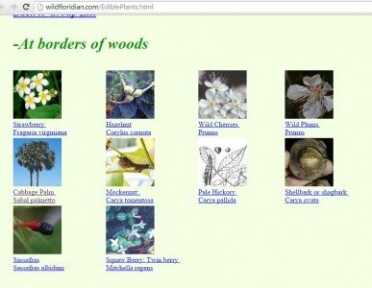
If you do a Google search on your state name and “edible wild plants” you will most likely come up with some very usable information, like this site on Florida edible plants. They have it divided up by where you will actually find them growing, but there is very little information on what part is edible. Note that the cabbage palm is included.
Printed Books
There are also a number of compendiums per state and region. But again, if you search “edible wild plants” at Amazon, there are over 3,600 listings, most of them international compendiums of dubious value for survival. Narrow your search to “edible plants new hampshire” and you’ll get books that are just for the northeast. Narrow your search to “edible plants north dakota” and you’ll get “Edible Wild Plants of the Prairie,” which should be fairly useful if you live there. Don’t be shy. When there is a glut of information, finding the key search words is the way you find what you want. And use those Amazon reviews! With over 3,000 titles, most of them are going to be useless fluff.
There is also a series of books by one author, Steven Golieb, called “The Practical Guide to Edible Plants” which has mixed reviews on Amazon. Most people seem to feel like it has plants that they see around, but he apparently used stock photos from Wikipedia, so the books were research books, not personal experience books. Hack authors are an unfortunate product of the popularity and financial opportunity brought on from the prepping/survivalist movement, so take the books for what they are worth.
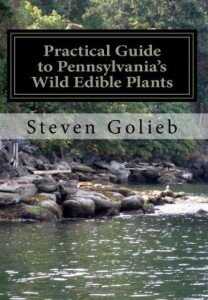
There are over 3,000 titles in Amazon on edible wild plants, but narrow your search to your state and you’ll find some very specific books. This series of “Pratical Guide” books has mixed reviews.
Eating Wild Plants
Other than cabbage palm, I can’t speak for eating wild plants myself. This article wasn’t meant to be a guide as much as it is a wake up call to all of us as to how woefully unprepared we are to survive in the wild. Ideally I hope to figure out what is what my next trip out to the cow pastures, and maybe we’ll follow this up with some recipes lol. Nobody wants to think about having to survive, let alone surviving with your “stuff.” But as I have explained now to several of my family and friends who refuse to take their heads out of the sand, when it comes time to die of starvation, (as so many people will heartily explain is their preference to prepping now), you won’t want to die. Nobody wants to die when it comes, and though we all die (anyone have a vampire you can hook me up with?), if you know that a storm is coming, isn’t some preparation prudent? With wars all over the globe ramping up now, constant government lies about everything from the economy to climate change, and even brazen abuses of power that clearly spell out that something is coming, isn’t prudent at this juncture …prudent? Help wake someone else up today. Maybe something will change.
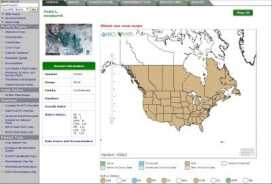
Just beware that you have to get out there and look for the plants. This map from USDA shows “wood sorrel” all over the US.

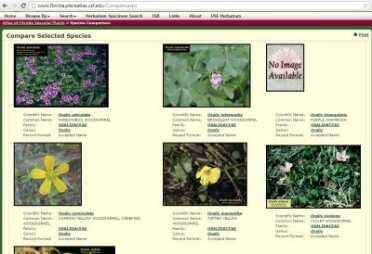
What you get in the supermarket is not Sable Palm but Royal Palm. You can eat only the top few feet, it can be eaten raw and it is delicious. I never tried Sable Palm but it sounds like an old Cosby line \” He\’s eatin\’ bushes.
I have written a book called, “Wild Edibles for Survival and First Aid,” with my Eagle Scout son. I am a Master Herbalist. This book includes 100 of the most important plants in Florida and beyond. It is hard to find good books for Florida plants. This book contains them better than any book I have seen and I own them all! Each plant has 3 photos and is written simply so that any Boy Scout could follow along. I also am available to give Wild Edible tours in Florida.
Can you tell us how to buy it?
USAF Survival School suggests a plant taste test. First make sure that there is an ample supply of what you are testing. Second, take the plant and put it to your lips, wait for a reaction if any. Third, put a small amount in your mouth, chew, but do not swallow, again wait for a reaction. Only then chew and swallow a small amount, wait at least a day or so to see if you have any adverse effects. I am a former USAF Survival Instructor, with many years of experience. I can tell you that their are quite a few plants out there that can kill you or make your survival situation worse. Members of the Hemlock family, some berries and mushrooms, to name a few. Avoid any plant that has a milky sap. Some plants are edible boiled, but not raw. Taking a field trip with a local expert is the best way to learn.The comment about insects is spot on. Grubs are some of the most nutritious edibles you can find in the wild.
For foraging in Florida, you can check out this website http://eattheweeds.com/
Plants?? If you want to survive in the wild eat insects,snakes,toads,etc, Very few insects are poisonous and you can eat the meat of any snake,even poisonous ones, as long as it did not bite itself and you take out the poison glands. Nowadays and in the US specially you have to be careful of insects that have been poisoned by pesticides. I would also suggest a study of the subject as some preparation may be required.
Mick Dodge, you wanna chime in?
I like to bypass everything and just eat dirt, because a billion earthworms can’t be wrong.
I don’t know if lambs quarter grows in FL ( it does grow in Israel I ate some from along the street in Ma’ale Levona, BH) but it’s an amazing prolific nutritious weed in the Midwest. Supposedly it’s a relative of spinach and steamed it tastes kind of like spinach. Unfortunately, the leaves are delicate and the geo engineering chemicals in rain can damage them.
Interesting thing about wild plants and cultivated plants, the one cultivated were at one time wild. Some are almost impossible to identify as the parents of the grocery store plants, corn and tomatoes are two obvious ones, but they all started out as wild plants.
Now the “sad” part about foraging for wild plants to eat is a simple one, few of the wild ones are very good.
They may be somewhat nutritious, but few will have what most consider a palatable flavor. 🙁
The good ones have largely been tamed.
There are exceptions, mushrooms, some of the berries, some other wild fruits like Paw Paw and others, However as mentioned, they will be very regional and it takes a great deal of work to find out which are in your region in amounts that can be foraged for.
A common oversight in wild food foraging, is little to nothing is mentioned about time of year. Two weeks and you will go from plenty to nothing in all manner or plants, mushrooms are one of these, many of the fruits will have a very small window. Most areas winter and spring will supply you with little to nothing to eat.
Bottom line is an easy one to understand, the ancient people did not rely on “found” plants to survive! They relied mostly on “found” meat to survive! Plants were only a secondary source of food for them and they were “experts” at what was available to eat from the wild, as it was all wild. Starvation was common if they could not find meat!
It was not until people figured out how to farm, that eating plants to stay alive became more normal. This meant they stayed in one place throughout the year to eat the plants, not running throughout the landscape, living off the land, hiding from those that would kill them.
I learned years ago that cattails are good to eat. It is fun, as an adult, to go out and find such food. We ate other things too, some of which were common (dandelions), others we never identified.
I don’t know about just going out and tasting to see if something is edible, or deciding on medicinal properties. I knew a researcher who spent a few years living with some South American natives. Their medicine man would taste an unfamiliar plant. If it tasted bitter he would say “this make good medicine”. Out of hundreds of plants used for medicine some worked. In some languages the word for medicine and the word for poison are the same.
I like to use wild edibles that have medicinal value. I have found that wild medicinal plants work better than some prescription meds. It is very important to have a positive identification of the plant before ingesting it. There is a host of plants where I live that helps what ails you. In a survival situation they could even save your life.
Hello; Well on this subject ,I have been living mostly off grid ,for a lot of years, I eat many wild plants and use many as med. use…I an in the far north of the mid west….The facts are you can eat most of the plants out there….I also eat and can mushrooms ,all spring ,summer and fall….The thing is the kind of plants and mushrooms change from year to year….the thing I have found out is if it taste good raw it prolly is good to eat….Have a good one, and keep your eyes on the horizon n your nose to the wind….J
I’m too old and have too many problems related to working like a mule too long to bother prepping for a length of time past my last pain management prescription, unless I find a steady white lightning supply post apocalypse. So I am working on the stuff my sisters kids can use on my demise. They will be armed .
With you there brother. 47 years of hard labor has taken it’s toll on me as well. Of course the young should heed the old adage as follows, ” I’m to old to fight and to old to run, so I’ll just have to shoot you”. In essence, never pick a fight with an old man:)
That goes for old women with arthritis also! At one time I could have walked into the woods and survived for quite awhile and you would not have know I was there! (No, I’ve never been a “lady”) Now I have trouble walking on a smooth trail! BUT please don’t assume I’m helpless, I can still shoot!
It rained today, we need all nature will give. This subject I have followed since a little boy of about 8 yrs.’ old. My elementary school had a book club back in the day, a buck a book. Good parents encouraged their children to read and my folks coughed up a couple of books for my pleasure. The two I most remember was on racing car driving skills and the other was wild edible plants. I’m a good enough race driver. I’m not however content to seek out and eat wild plants. I’ve tried and tried to forage for food. After every adventure I’d return ravenously hungry and with a good bout of the squirts along with a more dislike of plant material as a food. No mater what happens to turn the world to SH&T I’m confident every one will starve sooner or later and with a bad case of the RUN’s. What was it that Uele Gibbons said “everything tastes like chicken”, no it was “Every Parts are Edible”. Look to see the forest thru the tree’s.